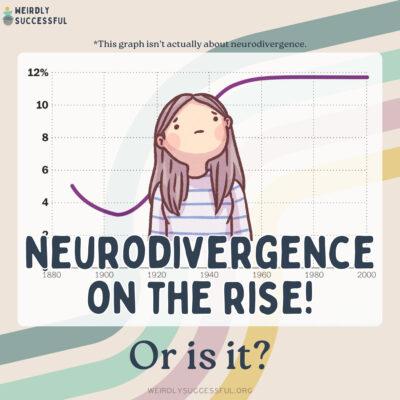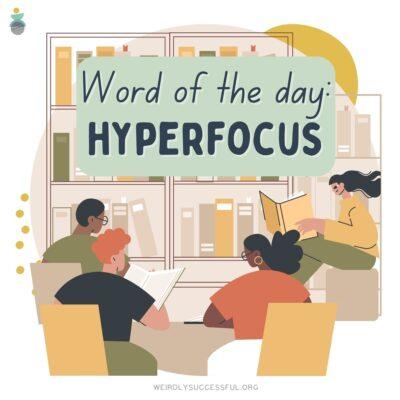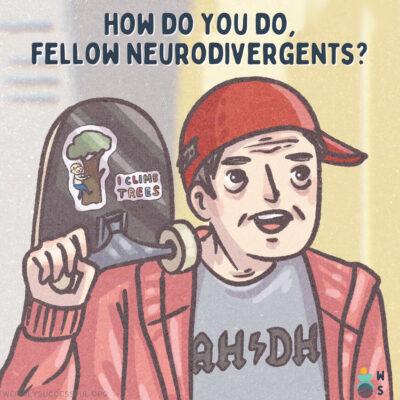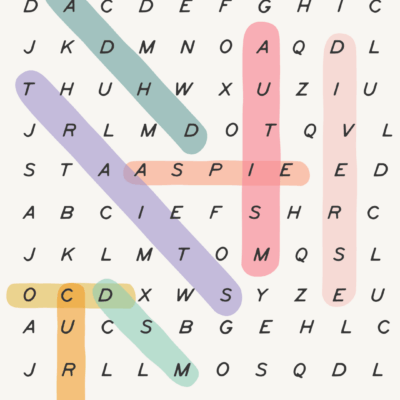ADHD & Autism on the Rise: Are There More Neurodivergent People Now?
Why it seems there are more neurodivergent people now than before, when in fact we've always been here.

Neurodivergent Adaptation Educator
Livia is a Neurodivergent Adaptation Educator with a sharp sense for simplifying complex ideas. Since 2008, she’s developed 294 distinct techniques catered to the needs of clients. A total of 5058 alumni have enrolled in one or more of the 8 online courses she co-developed with Adam, offering neurodivergence-inclusive frameworks for time management, goal setting, self-care for mental health, and small-business management.
Her life goal is to be a walking permission slip for neurodivergent adults.
In her free time, she enjoys stickers & planners, crochet & roller skates, and running around with her pet bunny Rumi.

Why it seems there are more neurodivergent people now than before, when in fact we've always been here.

There are lots of winter holiday planners out there. Not a lot of them are particularly ADHD, Autism or neurodivergence-friendly, though! So we created this one to reduce holiday stress, hassle and overwhelm so you can: Waiting for you on the pages ahead is a combination of guided self-care and planning pages to help you …

"How did no one ever notice??"
The amount of times this sentence is heard in our house, along with the dramatically exaggerated waving of arms, would definitely qualify for a sitcom catchphrase.
You see, reader, I'm what they call "late-diagnosed".
"Late" is relative, of course. For ADHD, "late diagnosis" can mean anything from above 60 for those above 60 to 25 for those who are 25. For Autism, …

"This time, let's start the website small", we said.
"Let's just put up a homepage and a contact", we said.
"Okay, let's write three blog posts to start with, but no more!", we said.
72 published pages later…
One part of my brain is like an ancient trickster god. (A proper one, so think less Tom Hiddleston, more Tom Bombadil.) You never know when they next visit, but when they do, they pop up …

Self-compassion literally means what it says on the tin: you have compassion for yourself. You can feel empathy towards yourself, you can be kind, even loving towards yourself. But it is often overlooked in favour of self-care. Learn why it's so crucial for every neurodivergent person to learn self-compassion.

Apps, productivity systems, quizzes for ADHD types, supplements, oh my! Not everything labelled with ADHD is actually good for ADHD.
In this article, we'll show you how to tell if a product or service is just using ADHD as a buzzword for a quick cash grab.

Talking about neurodivergence is not as clear-cut as it seems. The history of the treatment and acceptance of neurodivergent conditions is long and not without stigma and harm. This means that many words used throughout the decades have harmful connotations or dehumanising ideas behind them. Since language cannot be changed overnight, these expressions are still …

One of the most common pieces of advice for people with ADHD is ‘just use a planner’. I’ve been using planners and notebooks since the age of 10, and as a neurodivergent person, let me tell you one thing: this advice, on its own, is bullsh*t.

We are Adam, Livia and Nora, and we are Weirdly Successful! Welcome to our website. About Weirdly Successful Weirdly Successful is a 100% neurodivergent-run socially conscious enterprise developing strategies and frameworks for life & work for neurodivergent adults. We are neurodivergence specialists with backgrounds in a wide range of industries, combining cutting-edge research and best …
